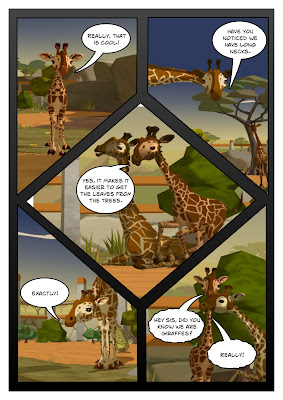It is no secret that I am an advocate for using games as a tool for learning. Games have the power to engage students and many offer great learning potential. They allow students to explore, be creative, learn content, develop literacy and numeracy skills, improve memory retention, develop problem solving and decision making skills and all while having fun. Lately, I have noticed a range of problem solving games which are becoming popular. These games offer great learning potential.
Often they relate to physics theories and require problem solving and decision making skills. They also teach students to persevere and to learn by trial and error. The game itself can be the class activity or it can be used as a stimulus for other activities by engaging the students into the subject or topic. Students can even document their journey through a game by creating a blog or journal by writing, video, pod cast and images.
Often they relate to physics theories and require problem solving and decision making skills. They also teach students to persevere and to learn by trial and error. The game itself can be the class activity or it can be used as a stimulus for other activities by engaging the students into the subject or topic. Students can even document their journey through a game by creating a blog or journal by writing, video, pod cast and images.
The first game I have found interesting is World of Goo created by 2DBoy. In this game you are given a number of blobs of goo which connect to each other the aim is to construct a structure which reaches the pipe to carry the goo. As you play the game you work through levels of difficulty. This is not a free game, you can download a trial from or purchase it from a games store.
Fo more information go to http://en.wikipedia.org/wiki/World_of_Goo
Along similar lines to the World of Goo is Huje Tower. This is a free online game and is also available as an apple app as both lite and paid version. In this game you construct a structure which needs to reach a given point. It also offers a range of levels to work through and provides hints.
Fantastic Contraption is another problem solving game which is available online and as an apple app. You are given challenges to construct contraptions using wheels and rods.
Another construction game which is available is Soup Toys, this game has been mentioned previously in this blog.
Tiki Towers
Tiki Towers is a problem solving game which offers fun for students. This is avalible as an apple app. You need to build a structure out of bamboo to help the monkeys collect the bananas and get to the other side. You are only given a number of bamboo to work with each time. As you play you unlock more islands and levels.
A site which has many more problem solving games is http://www.physicsgames.net/
There are also a range of games available which provide challenge which you solve by drawing in the solution. An example of this is Crayon Physics. Another game which is very similar is Magic Pen.
A game available on http://www.friv.com/ is Roller Coaster Creator. The challenge is to draw a roller coaster line from one point to another and to collect the coins on the way. It offers different levels of difficulty and you add different items to the construction.
There are also many drawing games available in http://www.linerider.com/
In these games you draw a line which becomes a track for a vehicle. You then press play when you have completed the track. It is also availabe as an app.















































